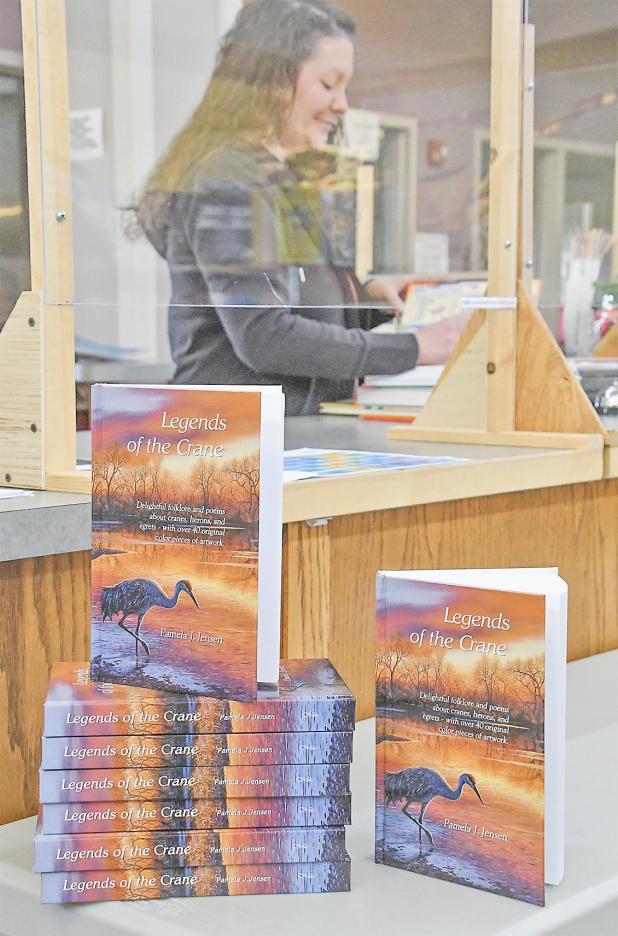
Jan Schultz | The Imperial Republican
Pam Jensen’s book “Legends of the Crane” is being distributed free at the Lied Imperial Public Library while supplies last. She published the book in 2000.
Crane book offers valuable history lessons
Imperial resident and Chase County High School graduate Pamela Jensen is giving away copies of her book “Legends of the Crane” at the Lied Imperial Public Library.
The book consists of a compilation of folklore and poems about cranes, herons and egrets with more than 40 original color pieces of artwork depicted in photographs and paintings.
Published in 2000, it was a two-year labor of love compiling the 261-page collection of lore and fables with works from many authors including Aesop and Hans Christian Anderson, Jensen said.
“To get the Anderson copyrights from Denmark the stories were sent in Danish and then had to be interpreted,” she said.
In the book preface, Jensen informs the reader cranes have inhabited the earth longer than almost any other living creature.
Cranes have been widely depicted in both Chinese and Japanese art and literature as symbols of good fortune, happy marriage (the birds choose a single mate for life), longevity (a crane can live as many as 80 years in captivity) and immorality.
Sandhill cranes average 3-4 feet in height, 6-12 pounds in weight and sport a wingspan of 6-7 feet. Whooping cranes are slightly larger than the sandhill and are colored a slate grey, whereas the sandhills are white.
The largest congregation of cranes in Nebraska occurs during their migration from February to early April. Some 500,000-700,000 cranes migrate into areas over the Platte River. During their stay the cranes feed off the habitat and gain about 2 pounds. Their diet is usually of 90% waste grain and 10% grub.
Years ago the Platte was over a mile wide, before dams and diverting changed the landscape. Now cranes go toward Ogallala past Grand Island, she said.
When cranes mate usually two eggs are laid and typically one will not survive due to a number of factors. The surviving chicks will be shown the flight route by the parents for their reference in their future flights.
In 2000, there was concern of the declining reproduction of cranes and an experiment was conducted by Operation Migration, Jensen noted. Crane chicks were guided by aircraft-led ultralight from Florida to Wisconsin that taught the young cranes the route without human contact.
“The experiments were a success,” Jensen said.
The International Crane Foundation in Baraboo, Wisconsin is the premiere group for the protection and conservation of cranes. The Foundation’ mission works worldwide to conserve cranes and the ecosystems, watersheds and flyways on which they depend.
It also provides knowledge, leadership and inspiration to engage people in resolving threats to cranes and their diverse landscapes.
The sandhill cranes are a thriving population now but the whooping cranes are somewhat in decline due to the hunting of them for their meat and feathers, Jensen said.
Jensen is a Colorado native who grew up mostly in Nebraska. She earned a Bachelor of Science degree from the University of Nebraska at Lincoln. She takes care of her mother Jewel Jensen in Imperial. Her hobbies include quilting.
The book has been shared and marketed through festivals such as the Roe Sanctuary in Nebraska, she said.
When the free books at the library are depleted, they can be purchased for $20 each by contacting Jensen at P.O. Box 794, Imperial, NE 69033 or through legendsofthe crane1739@gmail.com.
